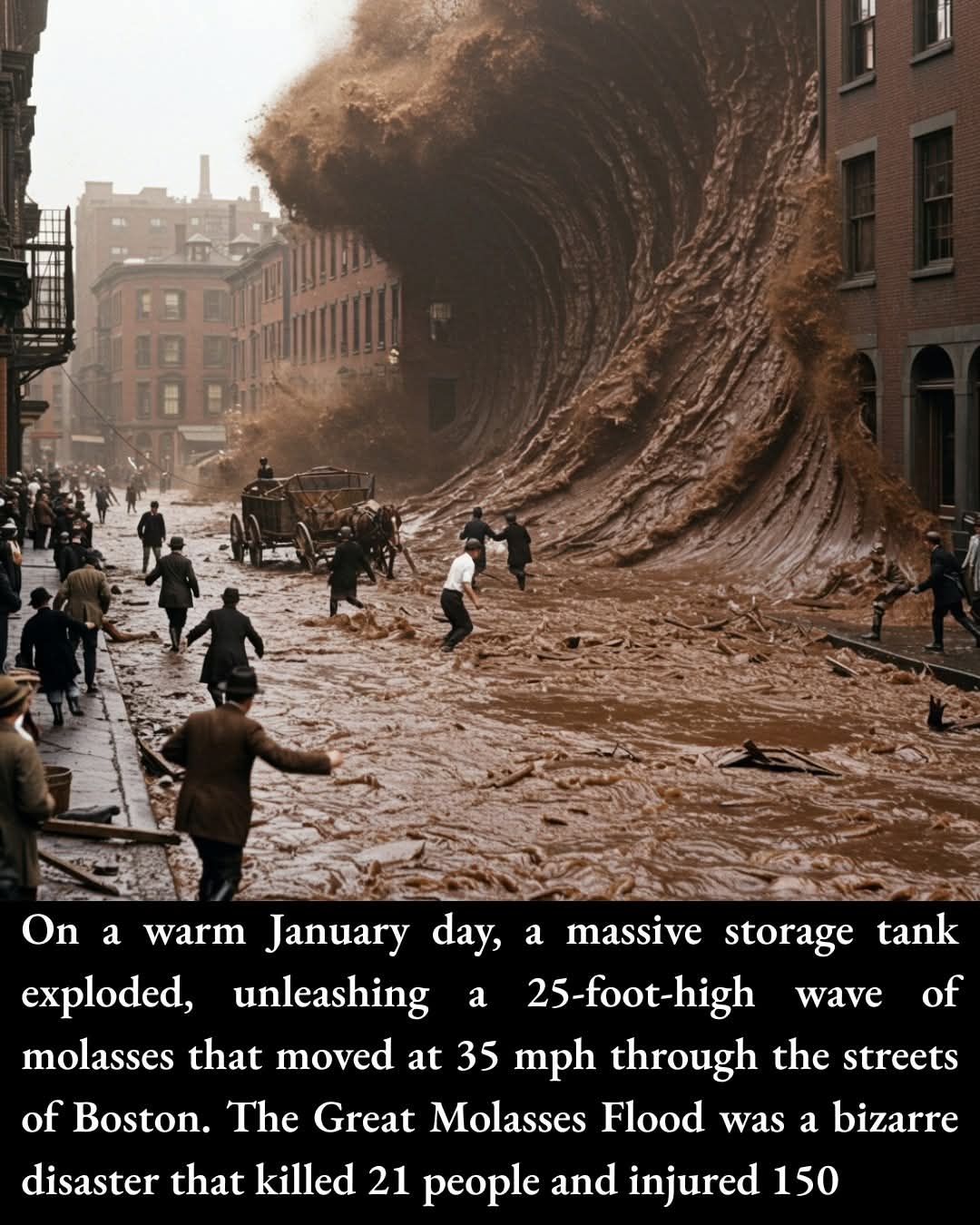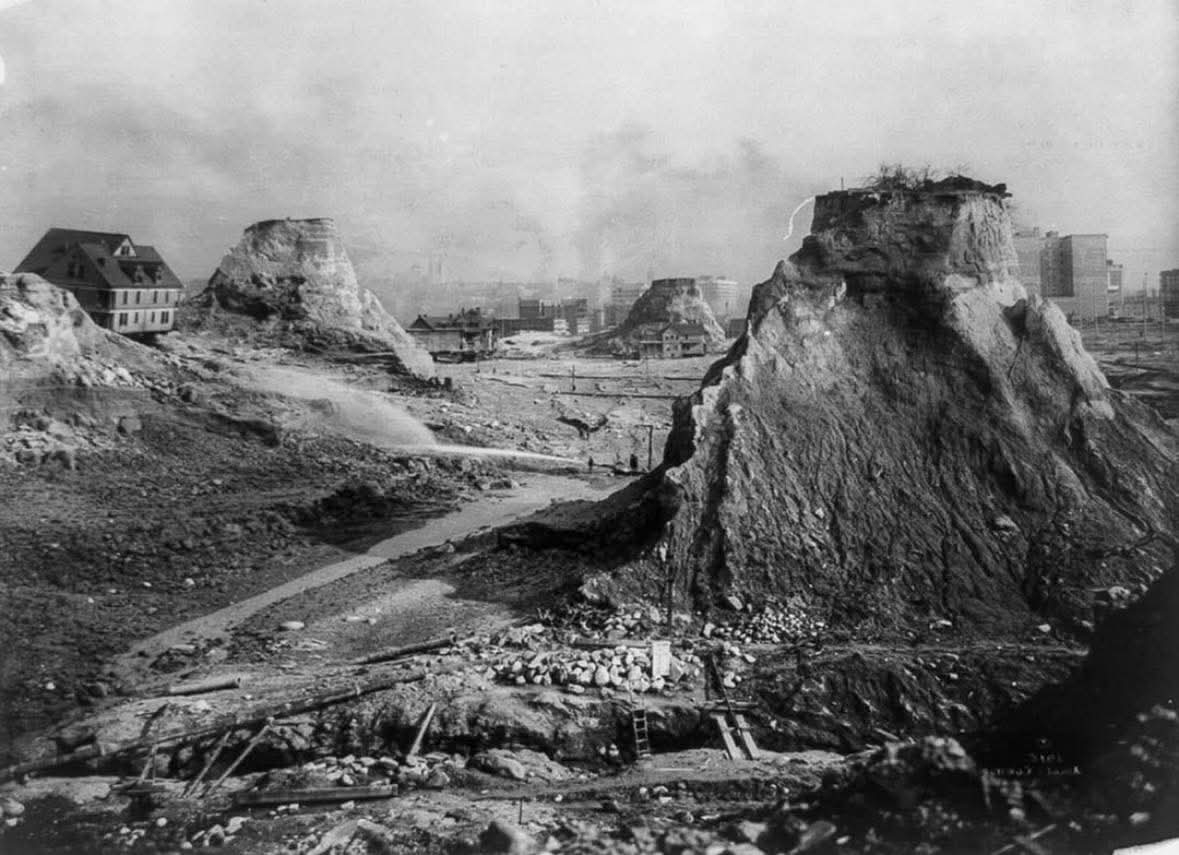Flattening hills to build Seattle, 1905-1930.
Between 1905 and 1930, Seattle underwent one of the most ambitious urban engineering projects in American history: the regrading of its hills. The city’s steep terrain, while scenic, was seen as a barrier to economic growth and expansion.
In response, entire hillsides (like Denny Hill, shown in this photo) were systematically flattened using sluicing, where high-pressure water cannons eroded the soil and sent it through massive flumes. The displaced earth was often used to fill in tide flats and create new, flatter land for development.
What you see in this image are the final remnants of Denny Hill, isolated towers of earth known as “spite mounds,” left standing amid the newly carved landscape.
The scale of the project was massive, moving millions of cubic yards of earth and permanently reshaping the city.
Today, much of downtown Seattle sits on land that was once underwater or high above sea level, testament to a bold, if brutal, vision of progress.
Fun Fact: To flatten Denny Hill, workers used high-powered water jets called "hydraulic monitors”, the same technology used during the California Gold Rush to blast through mountains in search of gold.
In total, they moved enough earth to fill over 100,000 modern dump trucks. The sheer amount of mud and sediment caused issues too, at one point, streets were left suspended in midair as the ground beneath them was washed away faster than the infrastructure could be updated. Seattle locals joked they needed ladders just to reach their front doors!
Flattening hills to build Seattle, 1905-1930.
Between 1905 and 1930, Seattle underwent one of the most ambitious urban engineering projects in American history: the regrading of its hills. The city’s steep terrain, while scenic, was seen as a barrier to economic growth and expansion.
In response, entire hillsides (like Denny Hill, shown in this photo) were systematically flattened using sluicing, where high-pressure water cannons eroded the soil and sent it through massive flumes. The displaced earth was often used to fill in tide flats and create new, flatter land for development.
What you see in this image are the final remnants of Denny Hill, isolated towers of earth known as “spite mounds,” left standing amid the newly carved landscape.
The scale of the project was massive, moving millions of cubic yards of earth and permanently reshaping the city.
Today, much of downtown Seattle sits on land that was once underwater or high above sea level, testament to a bold, if brutal, vision of progress.
Fun Fact: To flatten Denny Hill, workers used high-powered water jets called "hydraulic monitors”, the same technology used during the California Gold Rush to blast through mountains in search of gold.
In total, they moved enough earth to fill over 100,000 modern dump trucks. The sheer amount of mud and sediment caused issues too, at one point, streets were left suspended in midair as the ground beneath them was washed away faster than the infrastructure could be updated. Seattle locals joked they needed ladders just to reach their front doors!







